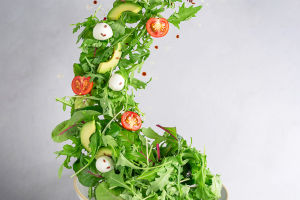Kimchi is one of the most iconic dishes in Korean cuisine. It's spicy, crunchy, sour, and packed with flavor. But did you know we can easily make it at home?
Once we learn the basics, preparing homemade kimchi becomes a fun and rewarding process—and the taste is totally worth it.
Besides being delicious, kimchi is also rich in probiotics, vitamins, and fiber.
It's a great way to add some zest to rice, noodles, or even sandwiches.
What we need to prepare
Let's start with the basic ingredients for a simple kimchi recipe:
Main ingredients:
• 1 large napa cabbage
• 1/4 cup sea salt (for salting the cabbage)
• 1 cup water
• 1 medium carrot (julienned)
• 3 green onions (sliced)
Kimchi paste ingredients:
• 1 tbsp glutinous rice flour (or plain flour)
• 1/2 cup water
• 1 tbsp sugar
• 2 tbsp Korean chili flakes (gochugaru, adjust to taste)
• 2 tbsp soy sauce or fermented soy paste
• 3 cloves garlic (minced)
• 1 small piece of ginger (grated)
We can always adjust the spice level and seasoning to match our preferences.
Step 1: Salt the cabbage
1. Cut the napa cabbage lengthwise into quarters, then chop into bite-sized pieces.
2. Place the cabbage into a large bowl, sprinkle with the 1/4 cup salt, and pour in 1 cup of water.
3. Mix well and let it sit for 1–2 hours, tossing every 30 minutes. This softens the cabbage and helps draw out excess moisture.
4. Rinse the cabbage 2–3 times with clean water and let it drain fully in a strainer.
Step 2: Make the kimchi paste
1. In a small saucepan, mix 1 tbsp rice flour with 1/2 cup water. Cook over low heat until it thickens (about 2–3 minutes).
2. Turn off the heat and stir in the sugar, chili flakes, soy sauce, garlic, and ginger. Let it cool for a few minutes.
3. Once cooled, add the carrots and green onions to the paste and mix everything well.
This paste will be the heart of our kimchi—it brings in all the flavor!
Step 3: Combine and massage
Now that the cabbage is ready and the paste is mixed, we combine both in a large mixing bowl.
1. Wearing gloves (optional but helpful!), gently massage the chili paste into the cabbage until everything is evenly coated.
2. Pack the kimchi tightly into a clean glass jar or container, pressing it down firmly to remove air bubbles.
3. Leave some space at the top of the jar for natural bubbling during fermentation.
Step 4: Ferment the kimchi
1. Cover the jar loosely with a lid.
2. Leave it at room temperature for 1–2 days to kick off fermentation.
3. Once you notice bubbles or a tangy smell, move the jar to the fridge.
Kimchi continues to develop flavor in the fridge and can last for weeks. The longer it sits, the stronger the taste gets.
Tips for better homemade kimchi
• Use fresh cabbage and clean tools to prevent unwanted bacteria.
• Always taste a little before storing—it should be salty, slightly spicy, and well balanced.
• If the weather is warm, shorten the room-temperature fermentation time.
• Want it vegan? Skip fish sauce and use more soy-based options or miso for depth.
Let's make kimchi part of our kitchen
Making kimchi at home is easier than it sounds—and once we get into the rhythm, we might find ourselves making a new batch every month. It's healthy, versatile, and adds an instant kick to any meal.
Lykkers, have you ever tried making kimchi yourself? If you have a favorite twist or ingredient, let us know! Let's explore more delicious ways to enjoy this spicy Korean favorite together!


